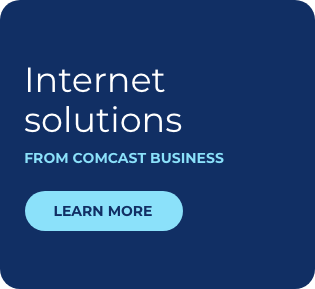The Power of the Cloud is Enhancing Our Decision Making

The power of Big Data rests in its ability to predict consumer behaviors and influence change by serving contextually-relevant recommendations and offering companies better insight on consumer habits. Brands are tapping into this knowledge network to drive more effective marketing campaigns, customer engagement at every touchpoint, and ultimately more sales. Internet-connected attire allows the user to track movement and ensure hyper-awareness of progress toward desired goals. These wearables, which transfer activity data to the cloud, offer new communication channels that are already surpassing any antiquated human-based tracking. In effect, these channels are ensuring that both consumers and brands have their needs met with minimal friction.
With the assistance of these services that so easily integrate into our daily routines, consumers can make better decisions for themselves and their loved ones in the never-ending pursuit of healthier and better managed lives. With the storage of aggregated data in the cloud, consumers can rely on clear-cut trends rather than conjecture and speculation to dictate the direction of their decisions.
Nudging Your Way to Glory
When it comes to forming habits, a myriad of theories exist on what inspires long-term behavior and our first example, MOTI, touches on many of them. MOTI is a personal tracking device that helps users mold and maintain habits by tracking data and ensuring results. The smart device empowers users to stay on track with personal goals with a nudge from consistent and varietal haptic triggers.
The portable object can be placed anywhere a reminder is required when pursuing a routine (eating more fruit throughout the day, for example). To activate the device, simply program the habit you’d like to develop and push a button every time you complete the task. MOTI will respond with a diverse grouping of lights, sounds and tactile nudges to offer immediate gratification in the form of “small wins.” These cues enable users to track their progress throughout the day. Alternatively, a red light will flash whenever progress starts to stray.
Certainly, repetitive and frequent encouragement drives motivation. If someone wants a more effective exercise regime, they might turn to a personal trainer for daily workouts. Trainers can offer motivation through nudges, subtle reminders, or praise—all necessary triggers that enable people to make better decisions that lead to healthy habits.
The Village Doctor Can Be Anyone With a Smartphone
While we see cloud data empowering personal productivity, it also inspires the greater good. CliniCloud is a digital stethoscope and non-contact thermometer that allows anyone to take instant temperature readings without touching the skin. The device syncs with the accompanying CliniCloud app to provide guided check-ups to assist in issuing a diagnosis. For example, if a person in a remote village suffers from a persistent fever, a fellow villager can monitor their vitals by plugging the stethoscope attachment into their smartphone.
The accessory requires no prior training to operate, meaning both health care professionals and parents can listen and develop an informed decision on how to manage every cough. Based on data such as a breathing rate and temperature levels, CliniCloud will then recommend instructions for treatment, or on-demand care when necessary.
Health and history stored in the cloud enable patients to store and access their records from virtually anywhere. Trends and vital stats can be shared in real time or over time with the entire family, or with a physician, creating a completely seamless and streamlined process for seeking medical attention.
No More Sleeping On Sleep
Smart beds, like LUNA, operate as not-so-active trackers to help people sleep better at night. Using accumulated cloud data of consumer habits and preferences, a smartbed provides accurate recommendations when it comes to sleep patterns.
Raindrops Falling On Our Collective Heads
It’s very name indicates that Big Data is too expansive to be relegated to the home as agencies, brands and businesses can too harness it for market-wide applications, for, as the following example shows, even rain has found its way into the virtual cloud.
Smart umbrellas have been designed by researchers at the Delft University of Technology to measure rainfall and help meteorologists with better weather predictions.
The connected accessory’s built-in sensor detects the sound of falling drops, turning the traditional waterproofing tool into a mini weather-monitoring station. Bluetooth-enabled features send the rain report to a smartphone app for a meteorologist to access and analyze. All of the aggregated data collected during a storm is funneled into one central system so professionals can analyze more accurate weather predictions. The implication of integrating ground measurements of rainfall, even if a miniature amount of data per city, opens up entirely new avenues when observing and explaining weather forecasts. Of course, the question of how to compensate consumers for their data collection is an important one, especially considering that a smart umbrella such as this was developed precisely because there’s such a measly desire to crowdsource the information that helps meteorological agencies report accurate measurements.
How Exactly Do You Capture a Tornado’s MRI?
Similarly, Brent Bouthiller and Nolan Lunsford of The Sirens Project explore the possibility of using drones to further understand the science of tornadoes. Each drone will come equipped with on-board measuring devices to capture a virtual MRI of the tornado. This pooled network of knowledge helps engineers and data scientists design more effective warning systems and develop stronger infrastructure for storm-proofing.
Alongside brands, sensor and mobile networks are leveraging all kinds of information — saved and stored for analytical purposes — to enable better decision making. Networked knowledge, accumulated from cloud data is being used to power more accurate predictions, better integrations, and a deeper understanding of behavior across multiple landscapes. In turn, both consumers and businesses can expect to be better informed along their continuing quest to lead better lives. As a result, our sleep will benefit, our homes will be proofed against a tornado’s tempest, and the change we come to expect from leading our lives will be determined by data-backed decisions and not simply expecting answers to drop out of the sky.
This article was originally published on PSFK.
The Internet of Things, where everyday objects are connected, is leading to better sleep cycles, weather prediction via smart umbrellas, and more effective tornado warning systems.
Locked Content
Click on the button below to get access
Unlock NowOr sign in to access all content on Comcast Business Community
Learn how Comcast Business can help
keep you ready for what's next.











